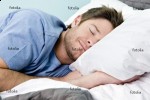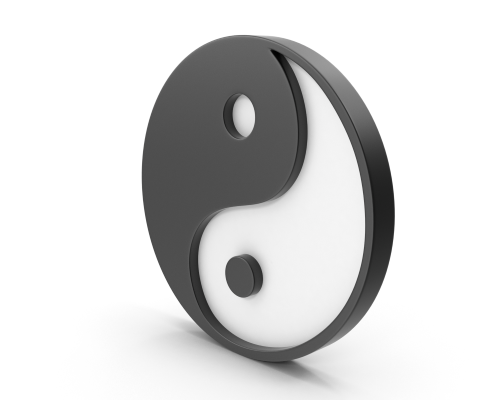 “My 88 year old husband was prescribed Ambien for insomnia. After the first dose, he fell while getting up to go the bathroom, gashed his head and had to go to the emergency room for stitches. A year later, I gave him a half-dose (again prescribed) and within minutes, his legs collapsed on him. I had the hardest time getting him into bed.
“My 88 year old husband was prescribed Ambien for insomnia. After the first dose, he fell while getting up to go the bathroom, gashed his head and had to go to the emergency room for stitches. A year later, I gave him a half-dose (again prescribed) and within minutes, his legs collapsed on him. I had the hardest time getting him into bed.
Ambien? Never again!
Your experience reminds us that sleeping pills may pose a serious risk for older people who have to get up at night to go to the bathroom. This is a dilemma, because many seniors suffer from insomnia. Even over-the-counter sleep aids sleep aids that contain the sedating antihistamine diphenhydramine ( advil PM, Nytol, Sominex, Tylenol PM etc.) may also contribute to unsteadiness, urinary retention and similar host of side effects such as rebound next day sleepiness and cognitive impairment. Older people should be careful with sleeping pills like Ambien. Other side effects may include reflux, next-day memory impairment, dry mouth and dizziness.”1
For those among us who experience occasional insomnia, you may have already tried a plethora of sleeping aids. The story above illustrates some of the dangers of the prescriptions on the market. Drugs such as the benzodiazepines approved as sleep aids, estazolam (ProSom), flurazepam (Dalmane), and temazepam (Restoril) have serious side effects. As with all these medications daytime sleepiness, cognitive impairment, dizziness, unsteadiness, sleep-walking, sleep-driving, memory lapses, and hallucinations have all been reported as a result of sleeping pills. If you have only mild insomnia, relying to heavily on sleeping pills can cause dependency and if abused may worsen your sleeping problems.
There are several non-prescription drugs sold over the counter for sleeplessness which contain the antihistamine diphenhydramine. Brands such as Benadryl, Nytol, Tylenol PM, and Sominex, which block the action of acetylcholine (anticholinergic effect) and are used as a sedative because they causes drowsiness. However, these may also contribute to unsteadiness and urinary retention. There’s also a fairly new drug out called zolpide, a sedative, it’s a inexpensive generic version of the drug Ambien. Generally it’s not prescribed for more than 10 days and is usually taken intermittently as needed to avoid problems with addiction or habituation, loss of effectiveness, and rebound phenomena. “The most common side effects of zolpidem are drowsiness, dizziness, and a “drugged” feeling, which probably reflect the action of the drug. Other side effects include confusion, insomnia, euphoria, ataxia (balance problems), and visual changes.” 1
The difference between drugs and taking an herbal medicinal are both the actions and side effects. Addiction is not a concern with natural medicinals.
Plants used in Chinese herbal medicine have been clinically tested and studies throughout Asia for the past 50 plus years. Their usage goes back to 2nd century. One such medicinal known to have a soothing and calming effect on the body and promote sleep is Spiny jujube or (zizyrus spinosae semen). Spiny jujube has been well documented for use when occasional insomnia is an issue. One study on rats showed spinosae significantly increased the rate of sleep onset and exhibited a synergistic effect with 5-HTP.2 “These results suggest that spiny jujube potentiated pentobarbital-induced sleep via a serotonergic mechanism.” Translation, you sleep without being put into a drug induced state. This herb and others are the answer to a peaceful nights sleep, without all the side effects of prescription or OTC drugs.
References:
1. http://www.mdidea.com/products/new/new029research.html
2. Zolpidem http://www.medicinenet.com/zolpidem/article.htm
3. http://www.ncbi.nlm.nih.gov/sites/entrez
5. WANG LE, BAI YJ, SHI XR, CUI XY, CUI SY, ZHANG F, ZHANG QY, ZHAO YY, ZHANG YH. Pharmacol Biochem Behav 2008;90(3):399-403. Department of Pharmacology, Peking University, School of Basic Medical Science, 38 Xueyuan Lu, Beijing 100083, China
6. http://www.mdidea.com/products/new/new029research.html


 “My 88 year old husband was prescribed Ambien for insomnia. After the first dose, he fell while getting up to go the bathroom, gashed his head and had to go to the emergency room for stitches. A year later, I gave him a half-dose (again prescribed) and within minutes, his legs collapsed on him. I had the hardest time getting him into bed.
“My 88 year old husband was prescribed Ambien for insomnia. After the first dose, he fell while getting up to go the bathroom, gashed his head and had to go to the emergency room for stitches. A year later, I gave him a half-dose (again prescribed) and within minutes, his legs collapsed on him. I had the hardest time getting him into bed. 





















